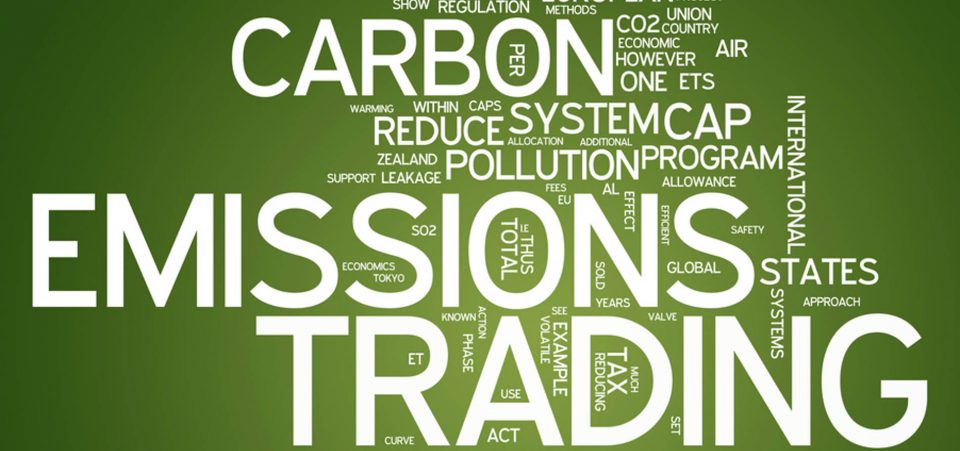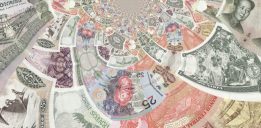Cap-and-Trade Leads to Economic Collapse Instead of Reducing CO2
On January 1, 2017, at the stroke of midnight, most people in Ontario were probably celebrating. But, as many of them popped open their bottles of CO2-dense sparkling wine, they were reminded of the spanking new carbon tax scheme. You see, sparkling wine is rich in CO2 (carbon dioxide to the layman). That’s what makes it so bubbly and fun.
But Ontario’s new cap-and-trade policy will increase living costs for all Ontarians. It could literally cause an economic collapse.
Indeed, Ontario’s premier (the Canadian equivalent of a U.S. state governor) has complied with Canadian Prime Minister Justin Trudeau’s plan to tax “carbon” by adopting a cap-and-trade system. Note, they never call it carbon dioxide anymore. Carbon has a much darker sound to it, imbuing a “carbon tax” with a sense of moral rectitude it doesn’t merit.
Cap-and-trade is an unfair imposition with severe consequences. Its inherent injustice contains the seeds of an economic collapse.
By the Ontario government’s own estimates, cap-and-trade should cost the average household $156.00 more in 2017 in gasoline and natural gas home heating. But the actual cost is closer to $400.00. (Source: “The real costs of Cap and Trade,” Toronto Sun, January 3, 2016.)
That may not sound like much to many people, but it does to most people.
I, for one, would love to keep an extra $400.00 a year. It would prove handy to pay for two ridiculous parking tickets I got over the holidays. I might even spend it on a health club membership. It would improve my fitness and reduce the burden on the public healthcare system. I would still have enough left for charity. Why would I want to waste it on a cockamamy scheme to cap and trade carbon?
But that’s not all. Because most businesses use energy, unless they operate from a cave in the woods, cap-and-trade will inevitably raise everybody’s costs. That means Ontarians, and soon all Canadians, will pay more for everything from fruit and vegetables to heating. Contrary to the doomsayers’ predictions—I’m looking at you Al Gore—it’s still cold in Canada.
But let us take the leap into science-fiction gloom and doom. Let’s assume that the climate change doomsayers are right: Earth is warming to unsustainable levels and humans are responsible. Would cap-and-trade solutions work?
Ontario Is Not Alone
Many countries have chosen to adopt cap-and-trade systems instead of carbon taxes to, ostensibly, reduce CO2 emissions. Cap-and-trade policies are the evolution of the U.S. Environmental Protection Agency’s (EPA) emissions trading scheme designed in the 1970s to tackle NOx and acid rain, among other issues.
Emissions trading was praised by political and private sector advocates. It allowed the market to “price” pollutants, encouraging free-market solutions. Not surprisingly, BP plc (ADR) (NYSE:BP)—of “Deepwater Horizon” fame—and Enron—noted less for its environmental successes than its Ponzi scheme—were proponents of the plan.
Indeed, carbon trading and market solutions to reduce emissions should raise many an environmentalist’s concerns. In many ways, the policies place an excessive burden on low- and medium-income earners, while the wealthy can avoid responsibility. Then there’s the issue that it puts a price on the natural environment; would it be immoral to attach too low a price?
The distributional justice of cap-and-trade raises a whole series of questions. In other words, there are simply too many ethics, justice, and effectiveness questions that cap-and-trade schemes fail to address. (Source: “Carbon trading: unethical, unjust and ineffective?” Grantham Institute on Climate Change and the Environment, April 21, 2011.)
A carbon tax, as soon-to-be Secretary of State and Exxon-Mobil Corporation (NYSE:XOM) CEO Rex Tillerson noted, is fairer. Whereas carbon trading spreads the burden unfairly, a carbon tax has more distributional justice, provided it’s combined with reductions in other taxes. (Source: “Exxon Is Actually Entirely Correct: A Carbon Tax is Better Than Cap-and-Trade,” Treehugger, November 15, 2012.)
The fact that BP and Exxon favor different approaches to carbon dioxide reduction schemes should also debunk the notion that the oil industry is necessarily to blame for “climate change denial.”
Oil companies have discovered ways to profit from climate change alarmism long ago. They contributed to designing cap-and-trade systems. They benefit directly from both the scheme and the alarmism.
As for Ontario—and other jurisdictions with cap-and-trade ploys—the government enforcers are fully aware that any business whatsoever that uses carbon-based energy to manufacture, create, or transport goods and services will shift their increased expenses to consumers. They will simply charge more.
The retailers won’t care about your degree of carbon or bank account heresy or orthodoxy. Everyone will pay more. But those with less to spend will be more affected. Cap-and-trade is as elitist a scheme as they come.
The New Indulgences and the Demonizing of Life-Essential CO2
The cap and trade of carbon dioxide emissions is not new. Its roots are ancient, and have much in common with the “indulgences” of the Italian Renaissance. In exchange for earthly cash, the Catholic Church would sell sinners “divine indulgences” (pardons for sins).
History tells us how this greedy trick created a real market known as the “indulgence trade” (sounds like carbon trading, doesn’t it?). Martin Luther, a Catholic monk and scholar, challenged the practice in his 95 Theses. He set off the Protestant revolt, breaking the Church itself.
Cap-and-trade policies, the direct evolution of carbon emissions, are literally the new indulgences. Rich countries buy the “carbon credits” that allow them to continue releasing CO2 emissions, forcing developing countries to reduce their own. The effect is to prevent developing countries from growing.
The World Trade Organization (WTO) achieves a similar effect, discouraging developing countries from improving their agricultural production through the agricultural subsidies mechanism.
As for CO2, is it really a problem? Many forget that CO2 is a gas that plant photosynthesis transforms into oxygen. Plants die if CO2 drops to the range of 229 parts per million (ppm) to 160 ppm. The optimum level is about 1,000 ppm.
Air contains many different gases and C02 accounts for a minor fraction. CO2 levels also fluctuate with the oceans. Cold water absorbs CO2 and releases it when it’s hot. That process is not in dispute, but it does dispute the notion that CO2 is the cause of warming. Rather, it’s the effect. Correlation is not causation.
Politician-to-environmentalist transformer Al Gore made one essential mistake in his Oscar-winning film An Inconvenient Truth. His biggest mistake was to argue that the oceans are warming because of CO2 emissions.
The opposite occurs; the sea warms up first. Then it emits more CO2. It’s a fairly well known phenomenon, and explains the coincidence of the ascending curves of temperature and CO2. So is Al Gore’s analysis more of a “convenient lie” to make carbon traders richer?
Cap-and-Trade Exploits Do-Gooders
The concept of man-made global warming or climate change gets support from those concerned about the environment. They want to protect it from contamination. Thus, they are vulnerable to becoming exploited for political and economic purposes. It is building a pretext to impose a world authority to administer the use of fossil fuels, creating new taxes, like cap-and-trade, and other market mechanisms. Meanwhile, it diverts attention from real contamination.
Cap-and-trade involves two steps: the first (Cap), sets a ceiling on emissions ranging from year to year, becoming progressively more stringent. The second (Trade) stipulates that government authorities distribute permits or shares, which are nothing short of a pass to pollute.
Virtuous companies use fewer such permits, so they can sell them to other less virtuous companies. There is nothing short of magic in how authorities and many companies have played the cap-and-trade card. They have persuaded average people to accept new taxes.
Not only have so many accepted, they have demanded them. Cap-and-trade is as close to the proverbial tax on the air we breathe as the world has ever come. So many people have developed an approach to “climate change” that parallels religious frenzy. They fear the new apocalypse.
Not surprisingly, the character of the environmental apocalypse is a flood. Everyone is worried that the world will end underwater because of rising oceans, melting glaciers, hunger, famine, etc. They are therefore all too happy to save future generations, if not themselves, from giving authority to governments to come up with the right solutions.






